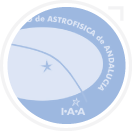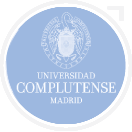The solsticial pause on Mars: 2 modelling and investigation of causes
The Martian solsticial pause, presented in a companion paper (Lewis et al., 2016), was investigated further through a series of model runs using the UK version of the LMD/UK Mars Global Climate Model. It was found that the pause could not be adequately reproduced if radiatively active water ice clouds were omitted from the model. When clouds were used, along with a realistic time-dependent dust opacity distribution, a substantial minimum in near-surface transient eddy activity formed around solstice in both hemispheres. The net effect of the clouds in the model is, by altering the thermal structure of the atmosphere, to decrease the vertical shear of the westerly jet near the surface around solstice, and thus reduce baroclinic growth rates. A similar effect was seen under conditions of large dust loading, implying that northern midlatitude eddy activity will tend to become suppressed after a period of intense flushing storm formation around the northern cap edge. Suppression of baroclinic eddy generation by the barotropic component of the flow and via diabatic eddy dissipation were also investigated as possible mechanisms leading to the formation of the solsticial pause but were found not to make major contributions. Zonal variations in topography were found to be important, as their presence results in weakened transient eddies around winter solstice in both hemispheres, through modification of the near-surface flow. The zonal topographic asymmetry appears to be the primary reason for the weakness of eddy activity in the southern hemisphere relative to the northern hemisphere, and the ultimate cause of the solsticial pause in both hemispheres. The meridional topographic gradient was found to exert a much weaker influence on near-surface transient eddies.































